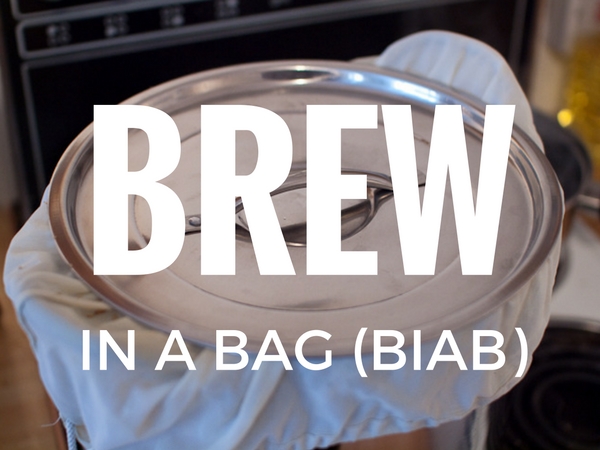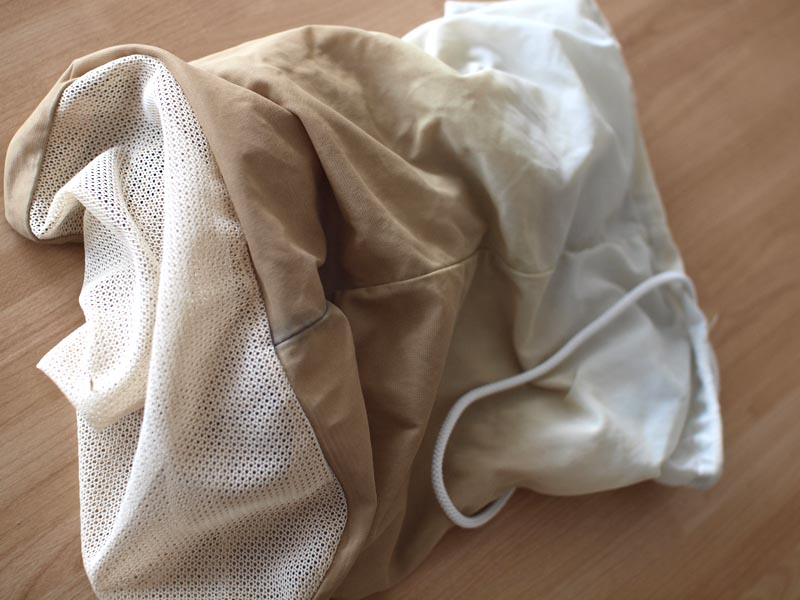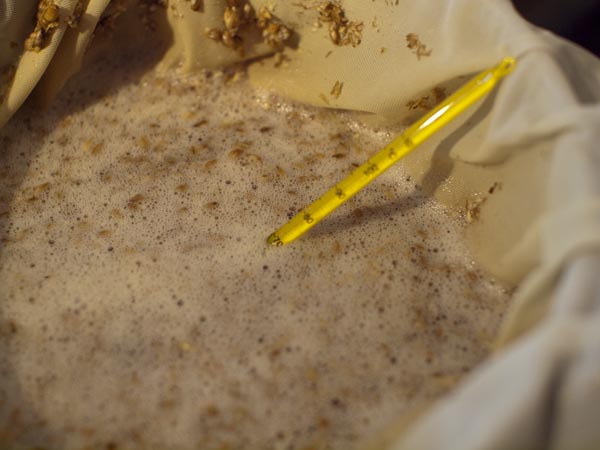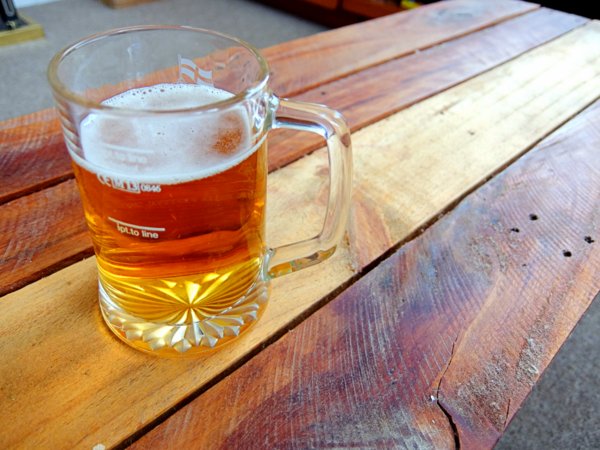Brew In A Bag – An Easier Way To All Grain Brew
One of the methods of home brewing that is a fairly new development, in relation to the hobby itself is Brew In A Bag or BIAB. In my opinion, it is one of the most interesting methods to gain popularity and a fantastic way to get started all grain brewing. What is it though, what does it involve and how do you do it. In this article, we are going to explore the techniques and theory behind the process and see why it is getting so popular.
If you aren’t familiar with all grain brewing at all then it may be helpful to read through the all grain brewing primer material here. This covers some of the processes that are going on when we brew with grain, as well as the stuff you need and key concepts. You can then build on that information to utilise this brew in a bag guide.
Table of Contents
The BIAB Process In A Nutshell
To kick things off let’s explain the process quickly before exploring the intricacies of BIAB brewing. The part of the brewing process that brew in a bag is concerned with is mashing so we’ll start there.
- The grist (grain) used in the recipe is placed in a large mesh bag
- The whole amount of water needed for the beer is heated to mashing temperature
- The grain is mashed in the water, which forms a very thin mash.
- The grain bag is lifted out after the mash and allowed to drain back into the pot
- No sparge is carried out (or very minimal rinsing of the grain) and the wort is brought to the boil in the same pot as the mash
- The rest of the brew is carried out as normal
Advantages of Brew In A Bag
To begin with let’s take a look at some of the key benefits of brew in a bag brewing, and some of the reason why there are so many home brewers using this particular method to make beers.
- Produces all grain beer.
- Uses less equipment than traditional all grain methods
- Takes less time
- Consistent results and wort production
- Ideal for new all grain brewers
As you can see, the brew in a bag process has a few key benefits which mean it has been adopted as a way to start all grain brewing, especially because of its ease and low barrier to entry in terms of equipment and expense.
Many home brewers who are content brewing malt extract beers are able to use brew in a bag as a means of transferring over to all grain brewing. In fact, the process isn’t much more complicated than steeping grains as you would for an extract beer. Let’s get down to the nitty-gritty and see what’s involved.
The Equipment Needed For Brew In A Bag
Kettle: This is the pot or boiler that will act as both the mash tun and the vessel to boil the wort. In a sense it’s the only vessel needed and the size of this pot will dictate the batch size for the beer. If for example, you want 21 litres of beer you will need a kettle that has the capacity for more than 30 litres, that will include all the liquid plus the grain required for a beer, which takes up a significant volume. Grain absorbs water so this needs to be taken into account when calculating the water needed, remember that we are just lifting out the grain and then boiling straight away. A 21 litre batch of beer will require around a 35 litre vessel.
If you are interested in smaller batches however then a smaller kettle will be fine. An 18 litre stock pot can easily make 10-12 litres of beer and a smaller kettle can be heated on the stove in the kitchen rather than using propane burners or heating elements.
Straining Bag: This is, of course, the bag part of brew in a bag. Most commonly these bags are made of strong nylon mesh which is close enough to prevent grain from escaping the bag but loose enough to allow liquid to move through the material. Again the amount of grain in an all grain batch can exceed 5 kilos which when wet is going to be pretty heavy so the bag needs to be strong as it will be lifted out and allowed to drain at the end of the mash. A large selection of bags depending on how big your boiler is can be picked up here.
Along with these two pieces of equipment, you’ll only really need other basics. Things like mixing paddles, syphon tubing, thermometers and hydrometers as well as a fermenter and airlock of course.
Brew in a Bags Evolution From Steeping Grains
As you may have already guessed BIAB’s method involves a bag of some sort. The idea is grain is placed in a nylon mesh bag and immersed in strike water heated to mash temperature, which you can work out here. The process is very similar to steeping speciality grains as you would when brewing extract beers but with a few variables that differentiate the two techniques.
In BIAB brewing you are relying on grain for all your fermentables. This means you will be using a substantial amount more grain than you would for steeping, this, in turn, means you need a fairly large bag to cater for the amount of grain.
The temperature is another important difference, as you are mashing in a bag the temperature of the water needs to be precise enough to hit the required temperature range for saccharification. This is the rest that allows enzymes in the malt to break down starches into fermentable sugars. Steeping temperatures are usually hotter than this which will denature these important enzymes.
Almost any style of beer can be brewed using BIAB as you would brew with a typical all grain brewing process. BIAB, however, means a mash tun is not necessary, the mash and the boil are carried out in the same pot.
As mentioned previously the size of the pot will dictate the maximum size of a beer you can brew. The mash liquor which will be the whole volume of water for a recipe remember is brought to temperature in the pot and the grain is immersed in its grain bag.
Difference Between BIAB and Typical All Grain Brewing
Brew in a bag is unusual in certain aspects compared to a typical all grain brewing process. The most apparent difference is the liquor to grist ratio. This liquor to grist ratio is referring to the amount of water used to mash the grains.
Most all grain brewers use a ratio of around 2 to 3 litres of water per kg of grain in the mash. As an example, in the last batch of beer I brewed, the ratio was 2.8 litres per kilo. I was using 4kg of grain in the recipe so ended up with 11.2 litres of liquid in the mash. After the mash, the grain was sparged with enough water to make the volume up to the pre-boil amount of 23 litres.
This example is completely different to a brew in a bag mash. A BIAB mash uses the whole volume of liquor used in the recipe during the mash. There is no sparge for BIAB brewing, this, of course, speeds the whole brewing process up. It does mean however that you are restricted to brewing a volume of beer that your brew pot is capable of holding as we’ll have to account for both the liquid and grain in the mash.
The mash thickness is very thin, this is fine and does produce very fermentable wort but the thickness of the mash does influence how the enzymes alpha and beta amylase work. Whether this is noticeable in the finished beer is debatable but it is certainly a factor worth considering.
Not performing a sparge is another peculiarity, the key benefits of this mean you do need extra equipment to heat up sparge water and the mashing vessel is as simple as the pot or kettle you use to boil wort. There is no mash tun manifold because you are using a mesh bag. Not sparging, however, means there are residual sugars left in the grain and this reduces the efficiency of extract. In a small batch, there is not a lot of difference, it’s a case of adding another handful of malt. As batch sizes increase however it becomes more wasteful and is definitely not viable on a commercial scale. As home brewers, we don’t really need to consider this as the small batches create only minor losses in fermentables extracted.
Brew In A Bag Process
1. Fill your kettle with all the water required for the beer. This includes all the water that will be lost to things like grain absorption and trub. A handy way to work out how much water is needed is using this calculator.
2. Begin heating the water to strike temperature which is usually somewhere around 70C – 74C this account for the drop in temperature that occurs when you immerse the grain which will be in the grain bag. This article explains a little more about strike temperature. If you are using a pot on a burner though it can easily be heated further taking care not to scorch the grain or bag.
3. Once you hit your target strike temperature drop in your bag of grain and thoroughly stir through to break up any lumps. Check the temperature and let the mash rest for 60 minutes or for however long your mash schedule is for.
4. At the end of the mash, it’s time to lift out the grain bag. Allow the wort to drain as much as possible back into the kettle. After a few minutes, most of the liquid will have drained from the bag. I like to drop the bag in a bucket which allows the last small amount of wort to drain out. The bag can then be emptied and the grain, thrown away. Depending on the size of batch you are brewing it can be heavy so draining can be hard work
5. The wort can now be raised to a boil and hops are added and the boil continues for the time designated for the recipe. After boiling the wort can be cooled, moved to a fermenter and the yeast pitched. Fermentation and racking to bottles or kegs as normal.
Key Points For BIAB
As we can see the main aspects that are changed for a brew in a bag process compared to a regular all grain brew with a mash tun is the very first stages of mashing and sparging. Once you get to the boil then the brewing process is exactly the same as any other beer.
Efficiency For Brew In A Bag Brewing
When looking at any beer recipe the efficiency should be listed in the details. As there is no sparge for a BIAB beer the efficiency is going to be less than if you use a mash tun and sparge the grain. It’s hard to say an exact figure for what efficiency you are going to get but a good ballpark will be around 65-70% compared with around 70-80% for a typical all grain batch.
As home brewers this minor difference isn’t really going to have a big impact on cost, it will usually be another couple of £’s worth of grain.
A way that brew in a bag brewers can boost their efficiency, is to mill the malt for the recipe to have a finer crush. As there is no run off of wort or sparging, you are just lifting out the bag of grain there is no risk of the mash getting stuck. A finer crush will help to extract more sugar from the malt. It really isn’t necessary when you are brewing small batches, you just need to adjust the efficiency of the recipe you are brewing down to a lower percentage.








A good way to increase the amount of extract is to mash in about 3.5-4 gallons in a mash tun (igloo container) and heat an additional 2-2.5 gallons of water in your kettle. WHen mash is complete lift bag out of the tun into the water in the kettle and rinse the spent grain like your steeping tea and remove bag. Add extract from the tun to the kettle water with a volume not to exceed 6-6.5 gallons and boil down to close to 5 gal over a 60 min time frame. This does require an extra mash tun, but no sparging vessel. It works well.